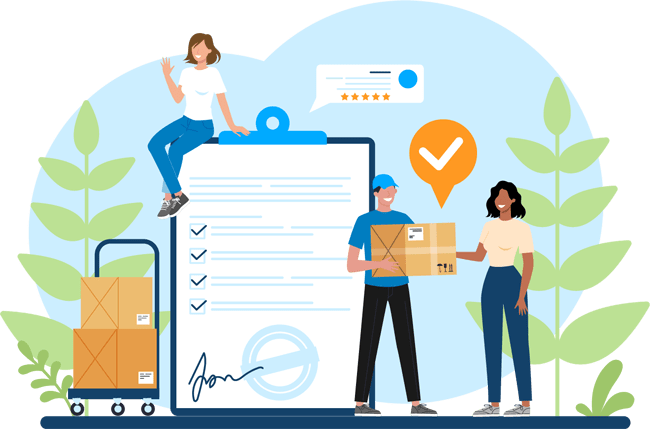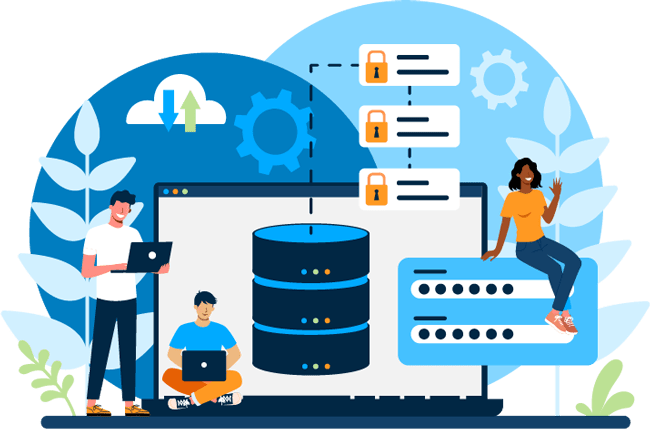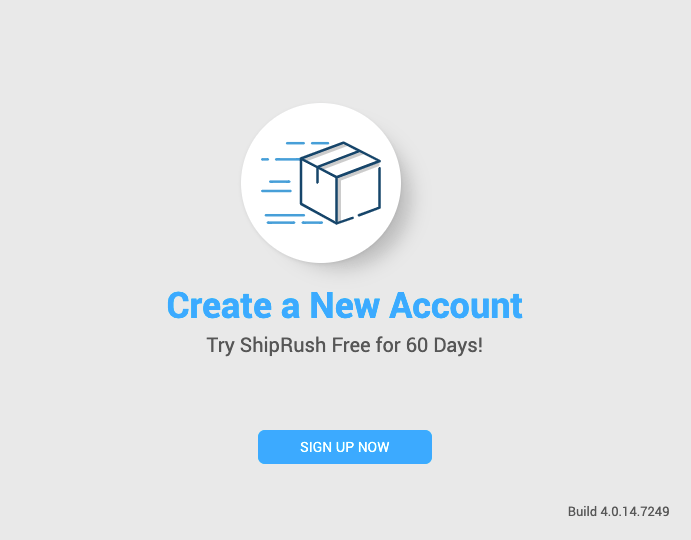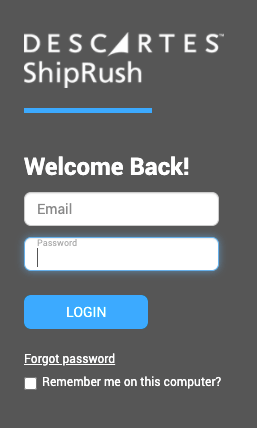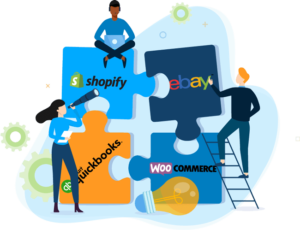While Ecommerce has grown at increasingly rapid rates over the past decade, the industry is now experiencing a phenomenon we call hyper-growth.
What is hyper-growth? A simple definition is the ability to expand and scale at a pace that was previously unknown. For small and medium-sized companies, hyper-growth can be moving business from your garage to a warehouse for the first time. Or, it can be addressing increased demand after going viral on Instagram, by navigating ecommerce logistics to keep your customers happy.
One of the leading contributors to recent hyper growth is changing buying behaviors driven by the pandemic, which compelled more customers to shop online for a wide variety of goods and services. As a result, ecommerce supply chains around the globe were pressured and disrupted, significantly impacting how carriers, distributors and customers conducted business.
The ability to quickly ramp up to handle hyper-growth is a frequent topic in recent conversations with our customers and carriers. Both groups shared challenges presented by hyper-growth and expressed interest in how the right technology and best practices can help them manage the ramping up process. Let’s take a closer look at some takeaways of our discussions.
Managing peak periods
- Preparation is key: The holidays and big ramp-up periods don’t have to be as alarming as many organizations think they need to be. But surviving an Ecommerce peak season does require thorough preparation. It’s important to work in the future to plan ahead, e.g. make a yearly calendar and work it a quarter at a time.
- Start with forecasting: Begin by asking how much sales are up year over year in other quarters. Then determine if peak period quarter sales may scale at the same rate. This helps determine the number of expected sales so you’re assured there will be enough product available to fulfill orders. This is crucial.
- Set customer expectations: Communicate early and often with customers. Give your customers the best understanding you have of when their products should arrive, given what you know from your carriers. Be sure to work any standard delays or waiting periods into the information you provide to the customer. Be forthright about potential delays, and keep customers updated with automatic emails.
- Consider carrier diversification: Delivery delays and rising inflation are causing many small and medium-sized companies to diversify their shipping partners just to make sure they can stay in business. Putting all your eggs in one basket can be a risk. Shop around for alternative carriers, especially those designed for small business delivery. Those businesses generally offer exceptional customer service and set realistic delivery expectations.
- Be prepared to pivot: Finally, don’t be so tied to the plan that you can’t pivot when things
don’t go as expected. And in today’s unpredictable market, it can happen frequently. If you’re worried about supply chain delays as the peak period gets closer, ask customers if you can shift their orders to earlier in the season. Starting sales early could also give you a few weeks jump on the competition.
Handling volume spikes
While peak periods used to be the worst time of the year, carriers have gotten better at handling their peak volume surge. Better planning and technology have played important roles in this improvement.
Today, most carriers begin their peak planning cycle a year out with a retrospective view of the prior year’s results. They identify what went wrong and what needs to be fixed, then build their technology roadmaps for the upcoming year.
Some carriers are even sorting and delivering seven days a week to keep their networks balanced and moving.
Customers also play a role in successfully handling volume surges. Their advanced planning will result in smoother processes and a better experience for their end users. Customers should:
- Ensure that carrier selection is completed well in advance of their peak season.
- Never test a new carrier during the busiest time of the year. That should be done earlier in the year.
- Make sure all dashboard data integrations are working well and that issue escalation paths are in place ahead of time.
- Plan on adding a pad or a buffer for delivery days unless using a guaranteed service.
- Work with carriers to have a back-up plan for missed pickups.
- Ramp up customer support.
- Make sure their customers receive timely communication on how any issues area being resolved.
Acquiring and retaining workers
Clearly, there have been labor challenges due to the pandemic over the past two years, and unfortunately, they continue in the market today. Getting workers post pandemic has definitely been difficult, but retaining those workers can also be an issue.
How are Ecommerce companies overcoming these labor challenges? Some innovative businesses are coming up with data-driven ideas to both attract and motivate employees. Here are a few examples.
- Acquiring new workers starts with offering an aggressive, competitive salary.
- Providing incentives for workers who traditionally don’t have access to commissions or incentive programs can go a long way to improve morale, and at the same time improve the bottom line.
- Because automation technology can provide global warehouse data points for each employee, companies can create contests to reward warehouse workers with bonuses based on performance criteria, e.g. items picked.
- Technology also enables new perks such as a monthly metric bonus based on a warehouse workers’ individual performance.
- Using data to incentivize is a good opportunity to hire, recognize and compensate workers beyond their standard wages.
Best practices for scaling up
If a brand is going through hyper growth, it’s wise to engage a responsible, highly-capable partner with distribution expertise to successfully handle the anticipated volume increase. Discussing effective strategies for ramping up will help ensure the best outcome for both the brand and its customers.
Here’s some advice on scaling up from two different perspectives – from the brand and its potential carrier/distributor partner.
Ecommerce brands, regardless of industry or product category, should consider the following when preparing to scale up their operations:
- You need to attract the right customers, i.e. your target audience – people who have wants and needs you can fulfill, and who are qualified to purchase your products or services.
- It’s essential that you give the target audience a reason to care about your brand and choose your product over a competitor’s.
- Getting your customer experience right is critical. If you’re not customer-focused, you’ll struggle in today’s market. When it comes to customer experience, successful companies don’t take a cost savings approach. They choose to invest for growth.
- These growth strategies include investing in technology to improve the customers experience while also increasing customer service staff to provide a human connection for troubleshooting.
- Reliability, flexibility and personalization are prerequisites for a satisfactory customer experience in today’s market.
- Customers expect your brand to remember their personal information and preferences in order to provide tailored recommendations the next time they shop.
- Online chat is the standard and best practice for online businesses. This provides customers with immediate access to a customer service agent who can provide answers.
When distributors and carriers are approached by brands hoping to scale their Ecommerce operations, it’s prudent to:
- First, vet the brand.
- Then determine if you will be able to handle the volume in the required timeframe. The last thing you want to do is execute poorly.
- Verify the brand’s expectations to see if you can meet them without overstretching or over promising. Make sure you can realistically make good on any promises made.
- Measure your current capabilities and establish future resources that may be needed, e.g. more trucks, scan guns, people.
- Be disciplined before saying yes to every deal that comes across your desk. Overcommitting can lead to terrible outcomes.
Hear expert insights on ramping up
For more examples on how carriers and ecommerce merchants are tackling hyper growth in their businesses, check out our panel discussion featuring Heidi Kay, VP U.S. Network of Sendle, and Robert Poole, CEO and President of Blue Sky Distributing.
With Descartes warehouse management and multi-carrier shipping solutions, Ecommerce companies can streamline business processes and easily scale to handle period volume spikes driven by hyper growth. Learn how we can help your business ramp up.

